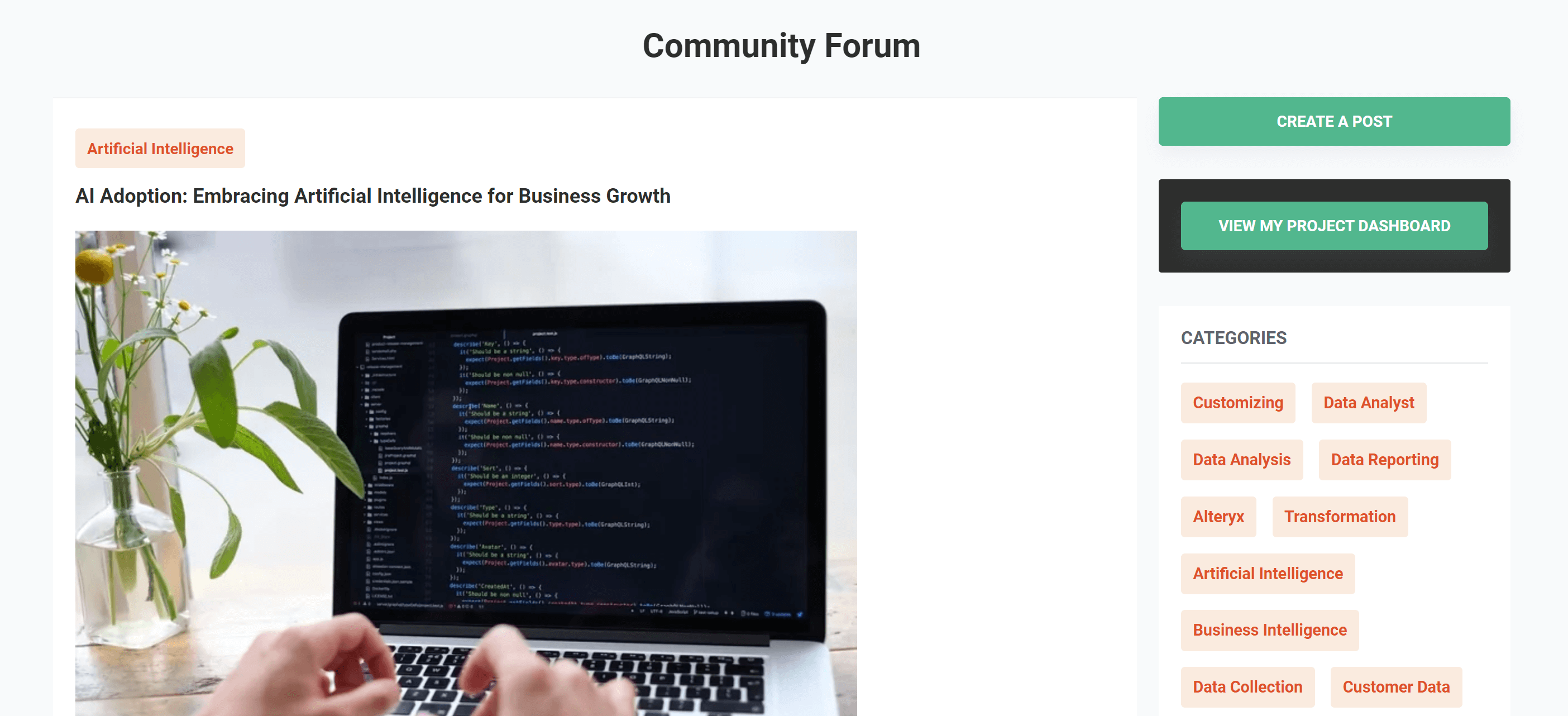Unleashing the Power of Big Data in Supply Chain Optimisation

In today’s fast-paced and highly competitive business landscape, supply chain optimisation has become a critical factor for success. Streamlining the flow of goods and services, reducing costs, and improving customer satisfaction are top priorities for organisations worldwide. Achieving these goals requires a deep understanding of the intricacies of supply chain management and leveraging the power of data analytics. This article explores the role of big data in supply chain optimisation, shedding light on its benefits and challenges.
Understanding Big Data in Supply Chain Management
A. Big data and its characteristics
Big data refers to the vast and complex sets of structured, unstructured, and semi-structured data that exceed the processing capabilities of traditional data management tools. It encompasses three key characteristics known as the three Vs: volume, velocity, and variety. Volume refers to the immense amount of data generated by various sources in the supply chain. Velocity represents the speed at which data is generated, collected, and analysed. Variety denotes the diverse forms of data, including text, images, videos, and sensor readings, among others.
B. How big data is generated in supply chains
Modern supply chains generate enormous amounts of data at every stage of the process. From procurement and manufacturing to warehousing, distribution, and customer interactions, data is continuously produced through various sources. This includes sales transactions, production metrics, inventory levels, customer feedback, social media interactions, and sensor data from connected devices. The proliferation of digital technologies and the Internet of Things (IoT) has exponentially increased the volume and variety of data generated within supply chains.
The Benefits of Big Data in Supply Chain Optimisation
A. Improved demand forecasting and planning
Accurate demand forecasting is essential for optimising inventory levels, production schedules, and transportation planning. Big data analytics enables organisations to leverage historical sales data, market trends, social media sentiment analysis, and other relevant factors to generate more accurate demand forecasts. By incorporating multiple data sources and advanced analytical models, organisations can enhance their forecasting accuracy, reduce stockouts, and improve overall supply chain responsiveness.

B. Enhanced inventory management and reduced stockouts
Effective inventory management is a balancing act between maintaining sufficient stock levels to meet customer demand while minimising holding costs and stockouts. Big data analytics provides valuable insights into demand patterns, seasonality, market trends, and customer behaviour. By analysing this data, organisations can optimise inventory levels, reduce excess stock, and prevent stockouts, ultimately improving customer satisfaction and reducing costs.
C. Efficient transportation and logistics management
Transportation and logistics management play a crucial role in supply chain optimisation. Big data analytics enables organisations to optimise transportation routes, minimise fuel consumption, and enhance delivery schedules. By analysing data on traffic patterns, weather conditions, historical shipment data, and real-time GPS tracking, organisations can make data-driven decisions to improve delivery efficiency, reduce transportation costs, and enhance overall logistics operations.
D. Optimised production and manufacturing processes
Big data analytics offers valuable insights into production metrics, equipment performance, and quality control processes. By analysing data from sensors, production machines, and other sources, organisations can identify bottlenecks, optimise production schedules, and improve overall efficiency. Real-time monitoring and predictive analytics can also enable proactive maintenance, reducing downtime and enhancing productivity.
E. Enhanced supplier management and risk mitigation
Supply chain disruptions can have a significant impact on organisations. Big data analytics enables organisations to gain visibility into supplier performance, assess risks, and make informed decisions regarding supplier selection and management. By analysing data on supplier delivery times, quality metrics, and financial stability, organisations can mitigate risks, build more robust supplier relationships, and ensure a more resilient and efficient supply chain.

Challenges in Implementing Big Data for Supply Chain Optimisation
While big data offers tremendous opportunities for supply chain optimisation, organisations face several challenges in its implementation.
A. Data quality and integration issues
Managing large volumes of data from diverse sources can lead to data quality issues such as inconsistency, incompleteness, and inaccuracies. Organisations must invest in data governance strategies and quality control processes to ensure data integrity. Additionally, integrating data from various systems and partners can be complex, requiring robust data integration solutions and standardised data formats.
B. Privacy and security concerns
With the increasing volume and variety of data being collected, privacy and security concerns are paramount. Organisations must implement robust data protection measures, adhere to privacy regulations, and establish secure data sharing protocols with partners and suppliers. Data anonymisation techniques and encryption can help safeguard sensitive information while still enabling valuable insights.
C. Organisational and cultural barriers
Implementing big data analytics in supply chain optimisation requires a cultural shift within organisations. Traditional decision-making processes may need to be reevaluated, and employees may require training to enhance their data literacy skills. Organisations must foster a data-driven culture that promotes collaboration, innovation, and continuous improvement.
Tools and Technologies for Harnessing Big Data in Supply Chain Optimisation
A. Predictive analytics and machine learning algorithms
Predictive analytics leverages historical and real-time data to forecast future trends and outcomes. By applying machine learning algorithms, organisations can automate the analysis of big data, uncover hidden patterns, and make accurate predictions. Predictive analytics helps optimise demand forecasting, inventory management, and supply chain planning.
B. Internet of Things (IoT) and sensor technologies
The IoT and sensor technologies enable the collection of real-time data from physical objects and assets across the supply chain. Connected devices and sensors provide valuable information on product location, temperature, humidity, and other critical variables. This data empowers organisations to monitor and optimise processes, improve asset utilisation, and enhance overall supply chain visibility.
C. Cloud computing and big data platforms
Cloud computing offers scalable storage and computing power, making it an ideal platform for processing and analysing large volumes of data. Cloud-based big data platforms provide the infrastructure and tools needed to manage, store, and analyse big data. These platforms often incorporate data visualisation capabilities, enabling organisations to gain actionable insights from their data and facilitate data-driven decision-making.
The Future of Big Data in Supply Chain Optimisation
A. Emerging trends and innovations
The future of big data in supply chain optimisation holds promising trends and innovations. Advanced analytics techniques such as prescriptive analytics will enable organisations to not only predict future outcomes but also prescribe optimal actions to maximise supply chain performance. Additionally, the integration of artificial intelligence (AI) and machine learning algorithms will enhance automation and decision-making capabilities.

B. Role of artificial intelligence and automation
Artificial intelligence (AI) and automation will play a significant role in leveraging big data for supply chain optimisation. AI-powered systems can autonomously process and analyse vast amounts of data, identify patterns, and make real-time recommendations. Robotic process automation (RPA) can automate repetitive tasks, freeing up human resources for more strategic activities.
C. Potential impact on sustainability and environmental practices
Big data analytics has the potential to drive sustainability and environmental practices within supply chains. By analysing data related to energy consumption, carbon emissions, and waste generation, organisations can identify opportunities to reduce their environmental footprint. Optimisation algorithms can help minimise transportation distances, optimise packaging, and facilitate circular supply chain models.
In conclusion, big data analytics has revolutionised supply chain optimisation by providing organisations with unprecedented insights into their operations. By leveraging the power of big data, organisations can improve demand forecasting, enhance inventory management, optimise transportation and logistics, streamline production processes, and strengthen supplier management. However, organisations must address challenges related to data quality, privacy, and organisational culture to fully harness the potential of big data. By embracing tools and technologies such as predictive analytics, IoT, and cloud computing, organisations can unlock actionable insights and make data-driven decisions. The future of big data in supply chain optimisation holds exciting possibilities, including the integration of AI and automation, as well as a greater focus on sustainability and environmental practices. Embracing big data as a strategic asset will be vital for organisations seeking to gain a competitive edge and thrive in the dynamic landscape of supply chain management.
Get your data results fast and accelerate your business performance with the insights you need today.



